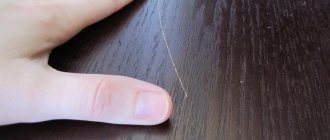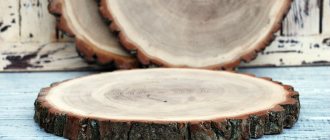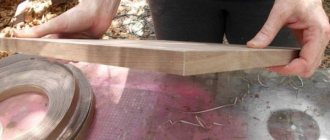Traditional methods
The method of starching that modern women use has not changed since the time of our great-grandmothers. It consists of preparing a solution from water and starch, which is then used to process things. Any starch is suitable for this purpose: corn, rice, potato. But still, in Russia, potato starch is most often used, since it gives a pure white color and thickens well.
After treatment with starch, the fabric fibers are covered with a thin protective film, due to which the item keeps its shape and looks elegant. The product wrinkles less, and dirt does not penetrate deep into the material, making it easier to remove when washing.
Before starching the product, it should be washed and rinsed thoroughly. You can wait until it dries, or you can starch the item in a slightly damp state.
Please note that some products are not subject to this procedure:
- Clothes and underwear that fit tightly to the body, since starched items are less breathable.
- Synthetic fabrics - starch has virtually no effect on them.
- Products of dark shades - white starch stains remain on them.
- Items decorated with embroidery using floss threads - the embroidered areas will lose their brightness.
Why do you starch fabric?
Starched bed linen wrinkles less.
The essence of the process of treating fabric with starch is as follows: a clean, just washed item is rinsed in a starch solution, then wrung out and hung out to dry. The smallest particles of starch, together with water, penetrate into the deep layers of the material, forming a protective film on the surface of the product.
As a result of starching, the fabric acquires new properties:
- the structure of the material becomes more dense;
- the product retains its shape better and longer;
- the material wrinkles less;
- dirt and dust do not penetrate deep into the fibers, but remain on the surface of the fabric, so clothes are easier to wash.
When planning to starch clothes, you should remember that this treatment has one significant drawback, namely a decrease in the air permeability of the material. All spaces between the fibers are filled with an adhesive mixture, which dries and prevents the natural passage of air. In this regard, you should not starch underwear and summer items that are adjacent directly to the body. It is better to limit yourself to processing collars, trims, cuffs, hats, aprons, tablecloths and napkins.
Solution preparation technology
Normal way
The classic method for preparing starch solution is as follows. First, the starch must be poured into a glass and diluted with cold water. Stir the mixture until all lumps disappear and the mass becomes completely homogeneous. Meanwhile, boil the required amount of water and pour the contents of the glass into the boiling water, stirring constantly. The resulting composition must be cooled and rinsed underwear or clothes in it.
Aerosol-starch
To starch colored items or individual details of blouses and dresses, for example, ruffles, you can use a starch-based spray. To make it, dilute half a teaspoon of starch in 2 liters of warm water, boil for 5 minutes and let the mixture cool. Pour the resulting liquid into a spray bottle.
You need to buy a sprayer that creates the smallest particles of liquid so that there are no stains on things.
To starch, dry fabric should be sprayed with a spray bottle, and then begin ironing.
Gloss-starch
Suitable for handmade products, such as crocheted napkins. After processing, the products become hard and acquire a beautiful shine. To prepare the mixture you will need:
- Rice starch – 10 tbsp. l.;
- Borax – 2 tbsp. l.;
- Talc – 6 tbsp. l.
Mix everything and add enough cold water so that the mixture acquires the consistency of sour cream. Dampen a sponge or brush in this mixture and apply to the napkin. After this, immediately iron the product through a piece of fabric.
Soft starch recipe
We bring to your attention a detailed master class on how to starch fabric at home. The processing stage includes several points:
- a soft solution consists of 1.5 liters of water and 1.5 tsp. potato solution;
- fill the ceramic container with 300 ml of clean water;
- Next, add starch and mix thoroughly, thereby preventing the appearance of lumps;
- the resulting liquid must be heated over low heat. When the solution warms up a little, remove it to cool;
- the finished composition should be transparent and slippery to the touch;
- after that, lower the fabric into the container for 3 minutes;
- The final stage will be squeezing out the starched material and allowing it to dry completely.
When the product is completely dry, it will be slightly elastic to the touch. It can be ironed and given the desired shape.
How to choose the concentration of the solution
Depending on what kind of fabric needs to be treated, a starch solution of varying concentrations is prepared. Accordingly, there are 3 methods: soft, medium-hard and hard.
Soft method
Used for bed linen, blouses and dresses made of thin translucent materials: chiffon, cambric, muslin, etc. At the end of the procedure, the matter does not become rigid, otherwise it would be unpleasant to the body.
To prepare the mixture, take a maximum of 1 tsp per 1 liter of water. starch.
To better saturate the fabric, you can leave it in the solution for a few minutes.
There is an easier way to lightly starch: pour the solution into a spray bottle and spray the laundry from it. In this case, the soaking, squeezing and drying steps are skipped.
Semi-hard starching
Suitable for table linen, furniture covers, men's shirts. In this case, a more concentrated composition is used: 1 tbsp. l. dry starch per 1 liter of water. It is prepared in the same way as in the previous method.
Hard method
It is used to process cuffs and collars, which after this procedure keep their shape well and do not become so dirty. At least 2 tbsp should be dissolved in 1 liter of water. l. starch. In addition to starch, you will need sodium boric salt (borax). Dilute 1 tsp in 1/4 cup of hot water. borax, pour this liquid into the hot starch mixture, stir and wait 2 hours. If you need a lot of solution, then the amount of borax increases proportionally.
How to dilute starch for starching?
First you need to prepare a container in which the procedure will take place, starch and water. Starch made from potatoes is white, even slightly blue in color; it can quickly become thick. For example, its corn counterpart thickens worse.
The item that will starch must be clean and well rinsed. You cannot starch completely dry laundry, as it will leave streaks on it. It is better to stiffen and shape items immediately after washing and rinsing.
The ratio of starch and water for the soft method is 1 teaspoon per 1 liter, for the semi-hard method - 1 tablespoon per similar volume of liquid. If there is a need to starch a large product, you should prepare more solution, observing the indicated proportions.
How to starch things correctly? You need to follow the following instructions:
- Dissolve a spoonful of starch in a small cup of cold water. The size of the spoon depends on the method chosen.
- Pour the resulting solution in a thin stream into a container in which a liter of water is boiling.
- Stir continuously to prevent lumps from forming.
- Cool starching liquid to moderate temperature. It is better to strain the solution through cheesecloth or a sieve, then lumps of starch will not remain on the material.
- Place the item in the solution for 1-2 minutes. The main thing is that the starch solution is well absorbed into the fabric.
- Wring out the item, shake it, straighten out the folds.
A few tricks from experienced housewives:
- The solution should be transparent. If this is not achieved, you need to add water and boil again.
- To starch colored fabrics, the solution must be at room temperature, otherwise the item may fade.
- Milk added to the starch solution (2 teaspoons per 1 liter of water) will help iron the product better.
- A drop of blue added to starch will help restore white fabrics to their original appearance.
If the housewife has chosen a harsh method of starching the fabric, then sodium boric salt (borax) must be added to the solution. A teaspoon of it is diluted in a small amount of hot water in a separate container, cooled, and then added to the ready-made starch solution. The resulting mixture should sit for at least 2 hours.
How to starch a dress without using starch
To make the material tougher and less susceptible to dirt, it is not necessary to use starch. Moreover, there are fabrics for which starch is “contraindicated” - for example, satin may turn yellow after such a procedure, so it is treated only with gelatin. There are other substances that can replace starch: sugar and PVA glue. Such methods are not used for clothing, but they are perfect for knitted napkins, ribbons for making flowers, and knitted hats.
How to achieve the desired effect without starch?
We use sugar
6 tbsp should be dissolved in 500 ml of water. l. sugar and boil the syrup. The solution should be removed from the heat as soon as it boils, otherwise the liquid will turn yellowish and cannot be used. Without waiting for the solution to cool, you should immerse the product in it and leave it there for 7-10 minutes.
It should be remembered that napkins and tablecloths treated in this way may attract ants and other insects.
Gelatin
You will need 2 tsp. gelatin and 2 glasses of water. First, the crystals should be diluted in a small amount of cold water, and when the particles swell, add the rest of the water. Place the container on the stove, bring the mixture to a boil and turn off the gas. When the liquid has cooled a little, you should put the dress in it and wait a little until it is completely soaked.
Glue
PVA glue should be dissolved in water in a ratio of 1 to 2 and mix the mixture well. The product must be dipped into the composition, given its final shape and left to dry.
How to starch knitted clothes:
Starching without starch
Sometimes the use of starch is not suitable for one reason or another for some fabrics. And if things need to be stiffened, you can do it without starch.
READ ALSO: How to stretch jeans in width and length at home: effective methods and useful tips
Sugar
Boil syrup from 3 tablespoons of sugar and 1 glass of water (to obtain a larger volume of the product, increase the amount of ingredients proportionally). Immerse the fabric in the syrup for 10 minutes. Dry on a horizontal, flat surface, smoothing out all wrinkles. It should be taken into account that when moisture gets on the product, the effect of starching disappears.
PVA glue
Dilute the glue in water in a ratio of 1:1 or 1:2 (depending on the desired result). Place the item in the solution or treat its surface. The desired shape must be given to the product while it is wet. Let it dry completely.
Gelatin
Soak 1 spoon of gelatin in cold water until it swells. Add water to a volume of 200 ml. Dissolve the gelatin completely and you can apply it to the fabric.
Learn how to get rid of mealybugs on orchids and other houseplants.
How to clean a microwave using lemon and other available products is written in this article.
On the page, read about the rules and features of growing cyclamen at home.
Features of starching of various fabrics
Canvas
If the fabric has sufficient rigidity, it becomes much easier to embroider on it, and you can even do without a hoop. To starch the canvas, you should prepare a hard starch solution, immerse the material in it and leave it there for 20 minutes. Next, squeeze out and place on a flat, hard surface to dry.
Gauze
Gauze is starched in cases where it is planned to be used for binding books, creating fluffy petticoats for concert skirts and other purposes. This is done using a medium-hard composition, in which the gauze must be kept for about 20 minutes, then removed and dried.
Tulle, lace, muslin
For light fabrics such as tulle, muslin and guipure, a soft starch solution is used. If you want the material to be softer to the touch, the concentration of starch should be reduced by 2 times, that is, take half a teaspoon of starch for 1 liter of water. Hold the item for 15 minutes. in the solution, stirring occasionally so that the fabric is well saturated. Gently wring out without twisting, straighten out all the folds and hang to dry. Before ironing, soften the material by lightly spraying it with water from a spray bottle. The iron temperature should be low.
Cotton products
To starch tablecloths, shirts and cotton bed linen, you need to make a solution using a gentle method. Immerse the washed items in the warm mixture and stir until the items are well soaked. Then carefully squeeze out, straighten out all the folds and hang on a rope.
Before ironing tablecloths and bed linen, they should be moistened with a spray bottle and wait 2 hours for the moisture to distribute evenly throughout the fabric.
Methods and stages of the procedure
Rice, corn, wheat, and potato starch can be used to soak fabrics. More often they resort to the use of potato starch. It is affordable and has strong thickening properties.
Before the procedure, the product must be washed and rinsed well. The concentration of starch in the solution may vary.
There are several starch methods:
- soft;
- medium (semi-hard);
- hard.
Soft
It gives the fabric a slight elasticity, it does not become hard. This method is used for starching bedding, blouses, dresses, and tulle. Concentration of starch per 1 liter of water is 1 teaspoon.
READ ALSO: How to mend jeans between your legs using a typewriter or by hand, neatly and discreetly
Procedure steps:
- dissolve starch in cold water (1/2 cup);
- stir so that no lumps remain;
- separately boil the required amount of water (depending on the size of the product);
- add diluted starch while stirring continuously;
- turn off the stove;
- let the solution cool to a warm state (it should be transparent);
- pour it into a basin and soak the cloth for a couple of minutes;
- Wring out and hang to dry, removing all wrinkles and dents as much as possible.
If the solution is not clear but cloudy, it should be boiled for an additional 5 minutes.
Average
Helps give some products (napkins, tablecloths, curtains, lace) a certain shape. Concentration: 1 tbsp. spoon of starch per liter of water. The preparation procedure is similar to the previous method. You should get a translucent “jelly”. If it is thick, you can add a little warm water. Starching time will depend on the type of fabric. It is enough to soak thin items (for example, made of tulle) for a few seconds. Lace, tablecloths, napkins for a few minutes. If you only need to treat a certain part of the product, you can apply the solution pointwise using a soft sponge. After 10 minutes, cover the treated area with gauze and iron over it.
Hard
They resort to it if it is necessary to ensure that the fabric stands. These can be cuffs, collars, petticoats of fluffy dresses. To strongly starch the fabric, you need 2 tbsp per 1 liter of water. spoons of starch. You can use another recipe. Prepare 50 g of starch and 1 teaspoon of borax (sold at the pharmacy) for 1 liter of water. Dissolve starch in cool water, and borax in boiling water, then cool. When the water boils, add diluted starch to it, then a borax solution. Turn off the heat and let the product brew for 2 hours. Dip a cloth into it for impregnation. Wring it out and hang it out to dry a little. Iron the item slightly damp through gauze.
Recommendations for dark fabrics
To shape a black or dark item, you can use gelatin as described above. The second way is to purchase ready-made starch spray, which is used during the ironing process. When purchasing such a composition, read the instructions on the package: it should indicate that the product is suitable for dark fabrics. Typically, such aerosols are used as follows:
- Shake the bottle and spray the composition onto clothing from a distance of 25–30 cm.
- Wait 20 seconds for the fabric to soak.
- Iron the item at the temperature indicated on the label.
Before use, it is advisable to test the product on an inconspicuous area of fabric.
Photo of starched fabric
Read here: Damp smell - tips for getting rid of the smell and its causes. Instructions for cleaning various rooms
Recommendations for knitted items
Crocheted napkins and tablecloths are starched so that they look neat and do not have to be straightened every now and then. For knitted products, a semi-rigid starch solution is used. If you want to give the napkins extra rigidity, you should not wring them too hard. Place the lace product on a flat surface and wait until it dries a little. After this, iron the item through a piece of thin fabric.
Knitted items can also be starched with skim milk. If you want the item to be tougher, you can add a little starch to the milk.
Adviсe:
- Remember that if the napkin gets wet, its hardness will disappear and you will have to starch it again.
- In order for bulky items (hats, knitted toys and flowers) to keep their shape, they should be treated with a very thick compound. If this is possible, then before starching the product should be placed on a frame of the appropriate shape.
- If the tassels or fringe with which the product is decorated are stuck together after processing, they should be held over steam for several minutes and then combed with a comb.
- Try not to keep starched items in damp areas, otherwise mold may form on them.
How to properly dry a starched item
Don't have an iron? The power is out and your clothes aren't ironed? Find out 12 easy ways to iron without an iron!
In order for the item to look perfect, it must be dried properly after starching. To do this, you should follow the following rules:
- After treatment with starch, the product should be carefully squeezed out, but not twisted, so as not to cause creases to appear. Next, hang shirts and dresses on hangers, and underwear on a clothesline. Things should be carefully straightened, trying to give them the desired shape.
- Products should be ironed when they are still slightly damp, first from the wrong side, and then from the front. If the item is starched in a hard way, it should be ironed through the fabric, pressing well on the iron to remove all wrinkles.
- Knitted napkins should be dried on a flat surface, placing a white waffle towel or other light-colored fabric.
- Starched items cannot be dried in the cold, since under the influence of low temperatures the starch is partially converted into sugar. If you want to hang an item in the air in winter, then you should add a little table salt to the starch, then the item will not freeze at sub-zero temperatures. By the way, salt gives white things an elegant shine.
So, starching any product is quite simple, the main thing is to follow simple rules, and the result will delight you and your guests.











